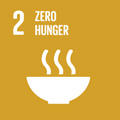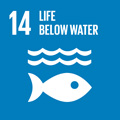- Docente: Luca Parma
- Credits: 6
- SSD: AGR/20
- Language: Italian
- Moduli: Luca Parma (Modulo 1) Elisa Benini (Modulo 2)
- Teaching Mode: Traditional lectures (Modulo 1) Traditional lectures (Modulo 2)
- Campus: Cesena
- Corso: First cycle degree programme (L) in Aquaculture and Fish Production Hygiene (cod. 8834)
-
from Feb 17, 2025 to Apr 16, 2025
-
from Feb 19, 2025 to May 19, 2025
Learning outcomes
The course provides fundamental knowledge about modern farming technologies of the major marine fish farming (sea bass and sea bream) and some promising new species of commercial interest. In addition the course will explore the most relevant crustacean and bivalve farming techniques. At the end of the course the student will acquire the technical and scientific knowledge to manage a modern system of marine aquaculture.
Course contents
Module 1
Extensive aquaculture, examples of extensive aquaculture in Italy
Recirculation systems: operating units of a recirculating system
Intensive aquaculture production: marine species production, with particular reference to sea bream and sea bass. Hatchery, inland tanks, floating cages.
Module 2
Shellfish farming, classification of production areas, installation of an aquaculture site, techniques for breeding and growth of shellfish, venericulture, mussel farming, oysters farming, economic management of shellfish farming
Readings/Bibliography
Notes and slides
Acquacoltura Responsabile. A cura di S. Cataudella e P. Bronzi. Unimar-Uniprom (eds), Roma
Manual on Hatchery Production of Seabass and Gilthead Seabream. Moretti et al. Fao, Roma. http://www.fao.org/docrep/008/y6018e/y6018e00.HTM
Parma, L., Bonaldo, A. Larval fish weaning (2013) Larval Fish Aquaculture, pp. 201-222.
Design and Operating Guide for Aquaculture Seawater Systems - Second EditionEdited by John E. Huguenin, John ColtJ. Colt Elsevier
Teaching methods
The course is divided in classroom lectures and practical training. During the lessons, the various parts of the program will be explained, even with the projections of photos and videos relating to farming systems and technologies used in aquaculture
Assessment methods
Module 1
The exam is oral and consists of asking to the candidate two or three questions to verify the know-how on culture techniques of marine fish. In particular: The hatchery for sea bass and sea bream. Intensive recirculation aquaculture system. Most important shrimp species and culture techniques. Extensive aquaculture in Italy.
Module 2
The exam is written
Teaching tools
Overhead and video projector, PC, laboratories and visits to fish farms.
Office hours
See the website of Luca Parma
See the website of Elisa Benini
SDGs




This teaching activity contributes to the achievement of the Sustainable Development Goals of the UN 2030 Agenda.
